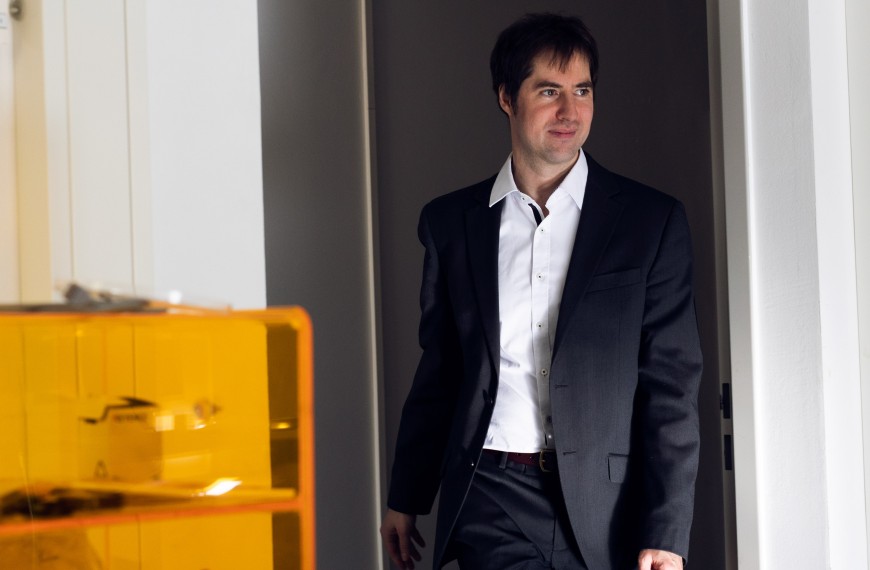Cool technology
Freezing living cells under the light mircoscope
18.06.2019 von Hildegard Kaulen
Professor Thomas Burg freezes living cells and organisms under the light microscope without a time delay. His aim: a better link between light and electron microscopy.
Thomas Burg loves extremes. The objects he studies are extremely small, extremely cold and extremely difficult to resolve. Burg has been a professor at the department of Electrical Engineering and Information Technology at TU Darmstadt since September 2018 and heads the “Integrated Micro-Nano Systems“ research group. His aim is to investigate new technologies for studying cellular processes with high resolution in space and time, as life is not static, but dynamic. To this end, however, light and electron microscopy must be integrated better than they are today. Burg’s research is worth around two million euros to the European Research Council (ERC) over the coming five years.
Light microscopy can reveal the dynamics of living cells and organisms, and it allows specific molecules to be marked and highlighted with fluorescent dyes. However, the resolution of standard fluorescent light microscopy is limited to some 200 nanometres due to the wave characteristics of light. Although a trick has recently been invented to overcome this limitation, detailed structural analysis in the range 0.1 to 10 nanometres is still only possible with electron microscopy. Cells and organisms have to be fixed in place to this end. This can only be done without damage using cryofixation. Using this method, samples are cooled down rapidly to temperatures below -135o Celsius. This is the only way water can retain its glassy, disordered structure. In this way, cellular structures remain largely unchanged due to the lack of ice formation.
Transfer step causes delay
“But to observe dynamic processes remains a challenge”, says Burg, who led a research group at the Max Planck Institute for Biophysical Chemistry in Göttingen for ten years prior to his move to TU Darmstadt. “The samples observed in the light microscope have to be moved to a different instrument for cryofixation. There is therefore a transfer step. The manual transfer sometimes takes minutes, depending on the operator. Automatic transfer takes one to five seconds. There always remains therefore a gap between the last observation of the dynamic process in the living object under the light microscope and the flashfrozen state in the cryofixed object. Part of the chain of events is therefore always missing“.
Burg’s aim is thus to flash-freeze cells and organisms directly under the light microscope so that they can then be examined in the frozen state using light and electron microscopy. To this end, the heat has to be removed rapidly and the sample cooled down and kept at below -135o Celsius continuously to ensure that the water molecules do not slowly rearrange into ice crystals, destroying the delicate structure.





